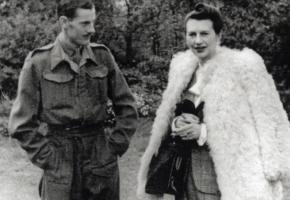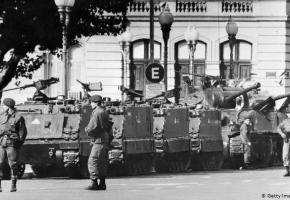1. Zumbi dos Palmares (Brazil, 1655 –1695)
Zumbi also known as Zumbi dos Palmares was one of the leaders of the Quilombo movement that pioneered the resistance to slavery in Brazil. Quilombos were settlements of escaped slaves, which inspired and organized enslaved Africans in Brazil to rebel, flee or fight for better conditions. Zumbi ran the Quilombo dos Palmares, a settlement set up as a refuge for escaped slaves in the present-day state of Alagoas, Brazil. He took on a mythical stature became a powerful symbol of resistance against the enslavement of Africans in the colony of Brazil.
2. Gaspar Yanga (Mexico 1545 – )
Yanga led one of colonial Mexico’s first successful slave uprisings and would go on to establish one of the Americas earliest free black settlements. An enslaved worker in the sugarcane plantations of Veracruz, Mexico. In 1570, along with a group of followers, escaped, fled to the mountainous regions near Córdoba, and established a settlement of former slaves or palenque. They remained there virtually unmolested by Spanish authorities for nearly 40 years. Taking the role of spiritual and military leader, he structured the agricultural community in an ordered capacity, allowing its growth and occupation of various locations.
In 1609, Spanish authorities sent a well-armed militia to defeat Yanga and his palenque but were defeated. Yanga’s surprise victory over the Spanish heightened the confidence of his warriors and the frustration in Mexico City. After defeating other Spanish forces sent again the palenque, Yanga offered to make peace but with eleven conditions, the most important being recognition of the freedom of all of the palenque’s residents. Finally in 1618, self-rule was granted. It was later called San Lorenzo de los Negros, and also San Lorenzo de Cerralvo.In the late 19th century, Yanga was named as a "national hero of Mexico" and “El Primer Libertador de las Americas" In 1932 the settlement he formed, located in today's Veracruz province, was renamed as Yanga in his honor.
Meanwhile in Panama, a slave named Bayano led the biggest slave revolts of 16th century Panama. Bayano's led 1,200 Cimarrons and set up a palenque known as Ronconcholon near Rio Bayano. He managed to negotiate truces with Panama's colonial governor, Pedro de Ursúa, but Ursúa subsequently captured the guerrilla leader and sent him to Peru and then to Spain, where he died. Bayano's revolt coincided with that of King Miguel de Buría (1551/52-1553/55) and was followed by Luis de Mozambique (1579-1582) and dozens more during the following century. Bayano's name has become immortal in the Panamanian consciousness through the naming of a major river, a lake, a valley, a dam, and several companies after him.
3. Marcos Xiorro (Puerto Rico c. 1800 - 1821)
Marcos Xiorro was the slave name of an enslaved African in Puerto Rico who, in 1821, planned and conspired to lead a slave revolt against the sugarcane plantation owners and the Spanish Colonial government.
After the success of the Haitian revolution (1791 - 1804), the French fled to the Dominican Republic and then to Puerto Rico, where they settled and made the island one of the largest exporters of sugar. Paranoia grew among the Puerto Rican slave owners that the Haitians were plotting to attack all the Spanish colonies, leading to increased brutality, spurring the likes of Xiorro to plan a rebellion. With his friends Mario and Narciso he planned the slave revolt of Bayamon and Toa Baja.
The plan was to take Bayamon hostage and unite with slaves of other cities like Rio Pedras, Guaynabo and Palo Seco, all armed and ready, after their victories, they would invade the capital of San Juan. Unfortunately a certain plantation owner named Miguel Figueres was informed (slaves who denounced plot of revolts, were rewarded by liberty and a sum of 500 pesos). Figueres then informed the mayor of Bayamon who dispatched 500 soldiers. Xiorro and his comrades were captured, tried, and executed. But wnet on to achieve legendary status among the island's slave population and has become part of Puerto Rican folklore.

4. Pedro Camejo 'Negro Primero' (Venezuela 1790 - 1821)
El Negro Primero was a lieutenant who fought with the Rebel Army during the Venezuelan War of Independence, earning his nickname for always in the first line of attack on the battlefield and having been the only black officer in the army of Simon Bolívar. Camejo was one of the 150 lancers who participated in the Battle of Las Queseras del Medio, later receiving the Order of Liberators of Venezuela for his participation. In the Battle of Carabobo, he fought with one of the cavalry regiments of the first division commanded by José Antonio Páez. When Camejo was fatally injured he presented himself before General Páez and he, with an unfailing voice, said to him: "My general, I come to tell you goodbye, because I am dead".

5. Antonio Ruiz (Argentina, died 1824)
Antonio Ruiz, nicknamed Falucho, was an Argentine soldier (second corporal) and a national hero of Argentina’s Independence War against Spain, fighting in José de San Martín’s army. Born a slave (perhaps in Africa), Corporal Ruiz served in the Regiment of the River Plate and died while defending the colors (white and light blue) of the revolutionary flag (later the Argentine flag) during a revolt at the fort of El Callao, Peru on February 6, 1824. Rather than hoist the Spanish flag, Falucho chose to be shot by the traitors, crying out with his last breath, Viva Buenos Aires! (Long live Buenos Aires!).
Other Afro-Argentina heroes of Argentine independence include Celestino Barcala, José María Morales and Juan Bautista Cabral who died in the Battle of San Lorenzo, while he was aiding then Colonel Don José de San Martín, whose horse had fallen to enemy fire. Of course, Argentines had little appreciation of its black heroes, infact its black population was decimated, mosty by heavy casualties on the front lines in the War of the Triple Alliance against Paraguay in the 1860s, where it was said black soldiers where chained together on the frontline and thus ceremoniously murdered by the country their foughts for.

6. Vicente Ramón Guerrero Saldaña (Mexico, 1782 -1831)
Vicente Saldaña was one of the leading revolutionary generals of the Mexican War of Independence. He fought against Spain for independence and later served as President of Mexico in 1828. His presidency championed the cause of Mexico's common people, and abolished slavery on a national level. However, his government was also marred by questions about its legitimacy, and he himself was overthrown in a coup in 1829. He was subsequently tried and executed for treason in 1831.
7. José Antonio Maceo (Cuba, 1845 –1896)
Jose Antonio Maceo was second-in-command of the Cuban Army of Independence and one of the most noteworthy guerrilla leaders in 19th century Latin America, known for both his bravery and for being a genius of military strategy. On joining the army, after participating in more than 500 battles in the revolt against Spain, men under Maceo's command began to call him “The Bronze Titan”, because of his exceptional physical strength and resistance to over more than 25 bullet or blade injuries.
On the brink of victory, Maceo opposed the signing of the Pact of Zanjón in 1878 which ended the Ten Years' War, arguing that no peace could be achieved if without the abolition of slavery: “I don’t want victory if it goes accompanied with dishonoor.” The Spanish made out Maceo was trying to start a racial war against white Cubans and, dodging assassation attempts, he settled in the Costa Rica. There he was contacted by José Martí and urged to initiate the War of 1895, which was to be the Cuban War of Independence
In 1896 Maceo and his regiment invaded the west of Cuba, riding and walking more than 1000 miles in 96 days. After several months bleeding the Spanish forces, Maceo arrived at Mantua, having defeated the superior forces of the Spaniards (five times the Cuban forces). In December Maceo was hit by two shots, one in the chest and another that penetrated his skull. Monuments to Maceo include those in Santiago de Cuba and another in Havana.
8. José Joaquín Puello de Castro (Dominican Republic 1805 - 1847)
José Joaquín Puello de Castro was a general and government minister from the Dominican Republic. He and his brothers, Gabino and Eusebio, were the only prominent black Dominicans in the Dominican War of Independence. When Independence was proclaimed on 27 February 1844 he was made part of the Central Independent Government (CIG) some say in order to pacify the mulattoes and blacks and allay fears of an alleged restoration of slavery by the independence plotters. Puello was made governor of the Santo Domingo Province, but when he refused to quell a coupe against what he saw as a corrupt government, the Consul of France, accused him of being an enemy of the French and of the whites. The Puello brothers were indicted on charges of instigating an anti-white revolution in the country and ‘ingratitude to the white race.’ They were judged in absentia and sentenced to death by a firing squad on 23 December 1847.

Also of note...Francisco del Rosario Sanchez, who was integrated deeply into the Trinitario movement as its second founding member. He is remembered for working along with Juan Pablo Duarte and Ramon Matías Mella, to fight for independence from Haiti, and later fought and paid for his life in the fight for independence from Spain. He was murdered by Pedro Santana who was a Dominican general that sided with the Spaniards after they tried to reoccupy the country post-independence. In his battles, he was said to have always been fierce and determined, even after he was exiled by the Spanish and almost drowned in a boat with Mella; he washed up shores of Ireland and from there went to the U.S then to Curacao until he was able to return to the Dominican Republic and continue his assault against Spanish rule in the name of a truly independent nation. Interestingly, in relation to the relative Eurocentricity of much of Dominican historians, his image is often shown as being lightened or having straighter hair but it’s obvious the man is of visible African descent.
9. Juan José Nieto Gil (Colombia, 1805 –1866)
Juan José Nieto Gil was a Colombian politician, Army general and writer and President of the Sovereign State of Bolívar from 1859 to 1864. In 1861, during the Colombian Civil War, he fought on the side of the Liberal rebels against the Administration of President Mariano Ospina Rodríguez, and helped secure the overthrow of the Conservative government. Nieto was the first Afro-Colombian to rise to politics in the history of Colombia becoming the first Afro-Colombian to become the executive officeholder of a first level administrative division of Colombia. His role, name, and background however, were subjugated to the obscure confines of history until he was rediscovered in the late 1970s by the Colombian historian and sociologist, Orlando Fals Borda.
10. Juan Gualberto Gómez Ferrer (Cuba, 1854 –1933)
Born into slavery Gomez was a revolutionary leader and a "close collaborator of José Martí's” helping him plan the uprising and unite the island's black population behind the rebellion. Later, as a journalist he advocated racial equality and authored numerous works on liberty and racial justice in Latin America. He is best remembered as the most conspicuous”Afro-Cuban activist leader of the 1890s independence struggle and one of the revolution's great intellectuals.




















